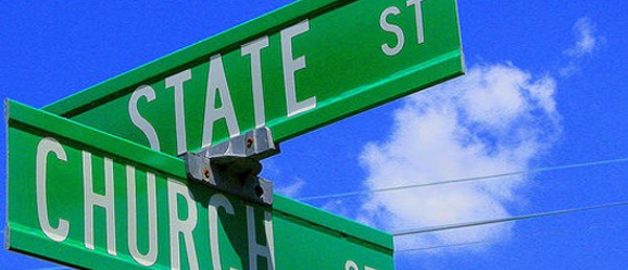First Amendment vs. “Separation of Church and State” (Part 2)
As discussed in our last blog, the misinterpretation of the phrase “separation of church and state” has led to abundant confusion about freedom of religion in our current cultural climate, especially in schools. However, if Christians understood more about the First Amendment, they would be better equipped to navigate some of this confusion. For example, numerous parents mistakenly think that their children cannot bring Bibles or Christian books to school to read during free reading time or recess, due to the supposed “separation of church and state.” One boy came to us after he was reprimanded by a teacher for handing out flyers to his church’s skateboard park because of . . . you guessed it, separation of church and state. After talking with the principal and explaining the student’s First Amendment rights, he was then able to hand out his flyers. (Note this topic is covered in much greater detail in our book, Navigating Public Schools.)
So what is the First Amendment? This is how the beginning reads: “Congress shall make no law respecting an establishment of religion, or prohibiting the free exercise thereof.” Up to the first comma of this phrase is the Establishment Clause; after it comes the Free Exercise clause.
What is the background? The U.S. Constitution was written in 1787. It is the foundation of our American government. The first ten amendments to the Constitution, clarifying vital rights of U.S. citizens, are called the Bill of Rights. These amendments were so crucial that the Constitution would never have been ratified if it had not included these key rights—in particular the First Amendment, which guarantees freedom of religion.
It is noteworthy that our freedom of religion is established in the very first of the ten amendments that constitute the Bill of Rights. Securing freedom of religion was clearly an important goal for the Founders; that they listed this important right first, shows that they valued this right above the others. Many people wrongly think that the U.S. Constitution contains the phrase “separation of church and state.” It doesn’t. In reality, the Constitution secures your freedom of religion.
In reading the public debates that took place in Congress, as well as the early writings of key government officials, we can see that the Founders were trying to prevent a government-sponsored denomination of Christianity, such as the Anglican Church in England. They wanted to be free to practice any denomination of Christianity they chose, whether Baptist or Anglican or any other. In their day the Bible was the main textbook used in public schools, prayer was common in government meetings, and they even held Christian church services in Congress; so clearly the Founders did not feel any of these practices violated the Establishment Clause.
In fact, it is an interesting bit of history that one of the key authors of the Establishment Clause, Fisher Ames, in 1801 said this: “[Why] should not the Bible regain the place it once held as a school book? Its morals are pure, its examples captivating and noble. The reverence for the Sacred Book that is thus early impressed lasts long.” The Founders’ intent was not a complete separation of church and state as understood by our culture today.
The reality is that while we have lost ground in the area of freedom of religion in the past fifty years, Christians have far more rights to live out their faith in public schools than they think. These fundamental rights are openly enshrined in the First Amendment to the U.S. Constitution, yet most people involved in the public schools do not even know these rights exist! Understanding what the First Amendment of the U.S. Constitution says about your freedom of religion will help you and your children exercise your rights in public schools and shine for Jesus in all areas of our culture.

